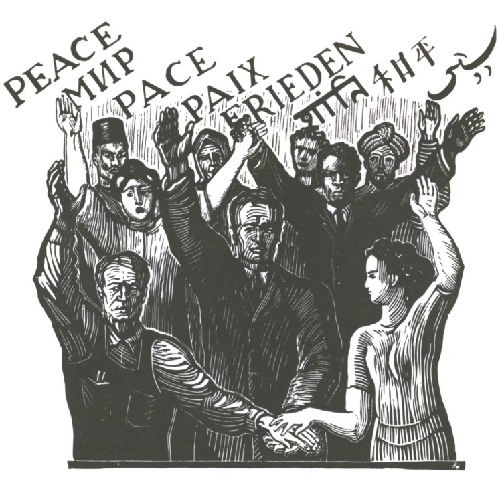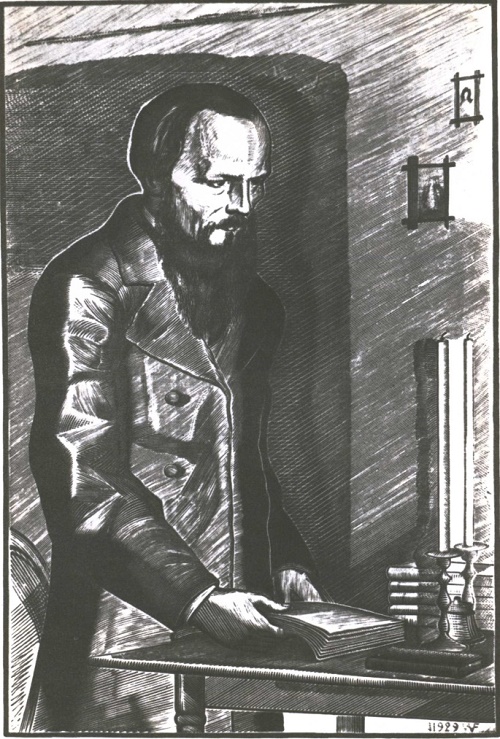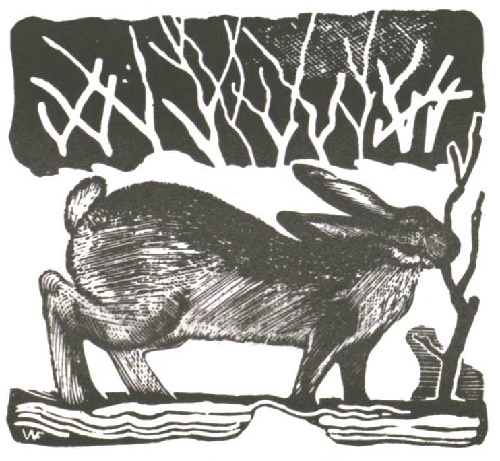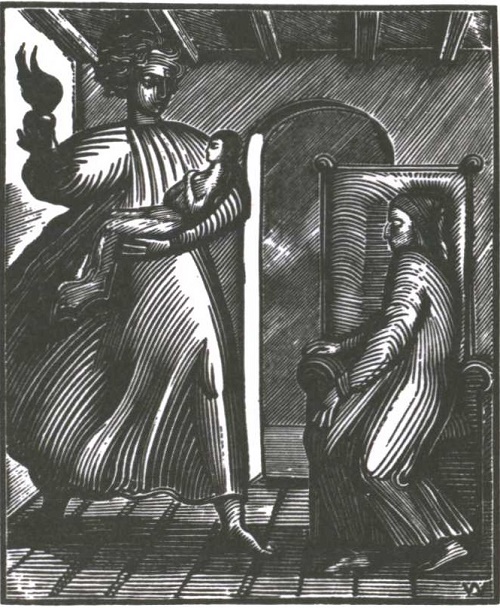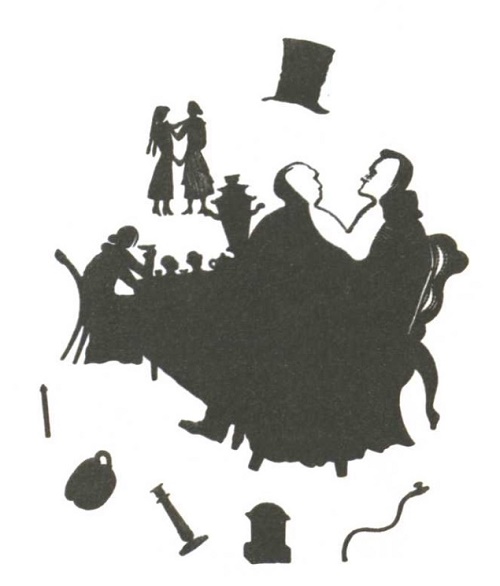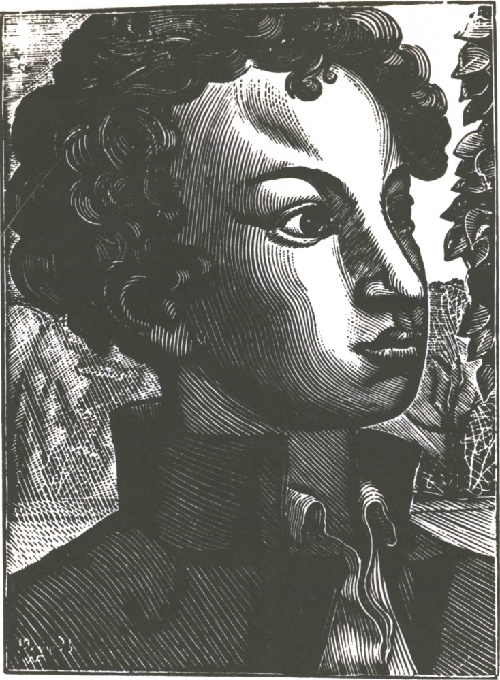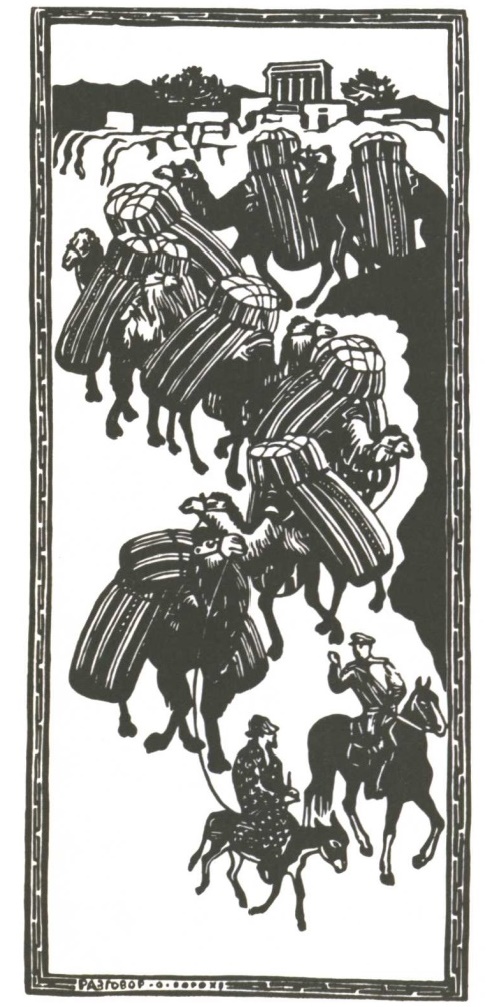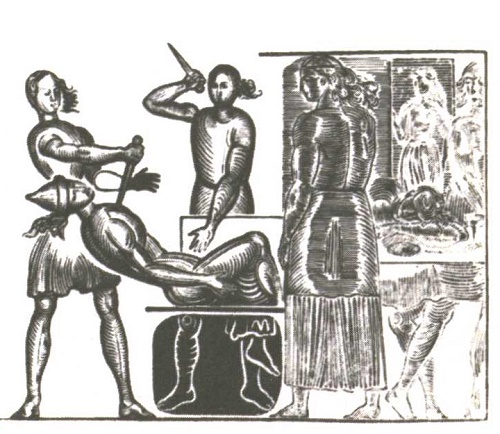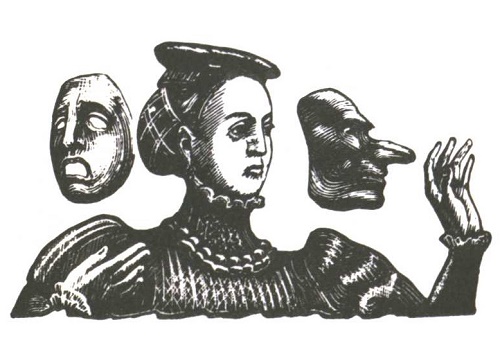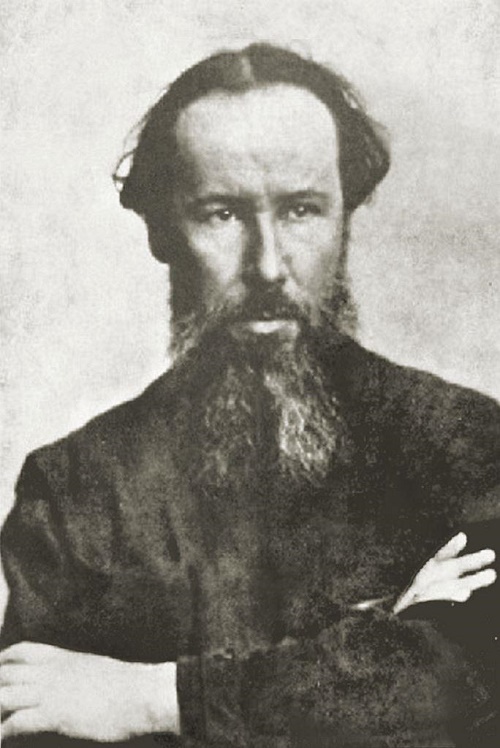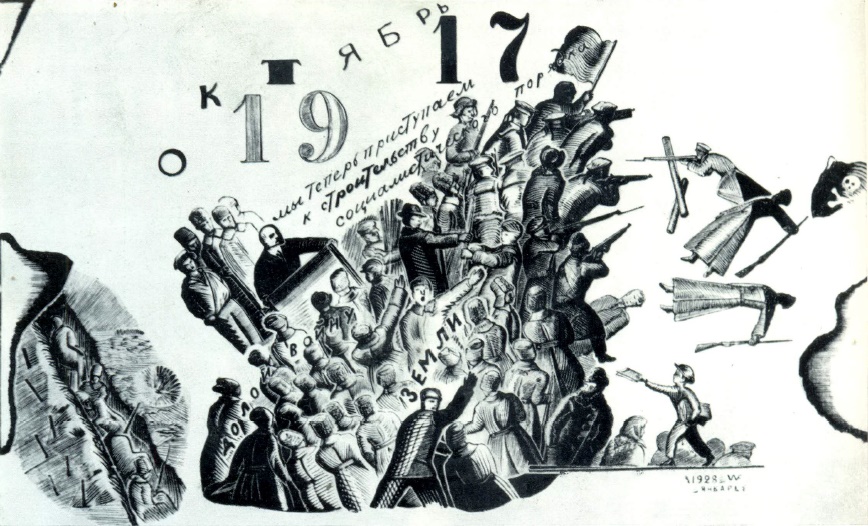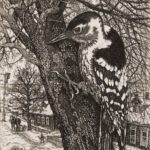Soviet graphic artist Vladimir Favorsky
Soviet graphic artist Vladimir Favorsky (1886-1964) was born at the turn of two epochs, and lived in the first half of the twentieth century, when established traditional art was replaced with carrying a giant boost of energy and ideas new forms. To the spirit of the analysis Favorsky contrasted the spirit of synthesis and to the decay of art into its constituent elements – integrity. Vitalizing beginning in his creativity – direct trace of the great traditions of Russian art and culture. Soviet graphic Vladimir Favorsky – master of portrait woodcuts and book illustrations, designer, painter, muralist, teacher and theorist of fine arts, professor. Corresponding Member of the USSR Academy of Arts (1957), Academician (1962), People’s Artist of the USSR (1963), winner of the Lenin Prize (1962).
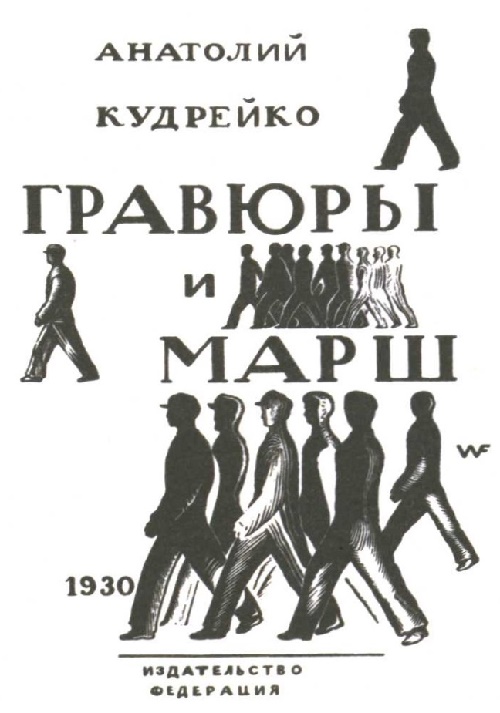
Soviet graphic artist Vladimir Favorsky (1886-1964). Cover for the book by Kudreiko ‘Engravings and march’. Wood engraving. 1930
The perfection of an art form based on the infinite love and understanding of the real world – the whole concept of the creative life of this outstanding master of modern times. Painter of wide range (Vladimir Favorsky worked in painting, monumental art, theater, and sculpture), he was also a major theorist and educator. But most of all Favorsky is known as a brilliant master of prints and an illustrator. He was an expert and creator of the book, where the pioneering spirit manifested itself most clearly.
Looking at the book as a single, undifferentiated into separate elements and evolving in time and space body, Favorsky has predetermined the development of book art, created a kind of school, followed by contemporary artists who devoted themselves to the book. During his long creative life Favorsky has created a series of illustrations to many classic and modern works of literature. And none of them in their plastic repeats another. This is indicative of Favorsky, because he was interested not so much in a story, but first and foremost, in the nature and style of the illustrated book, its special, inherent only by it attitude. This also had an innovative attitude to the illustration – the artist acts as the interpreter of a text book, reveals its contents, penetrates deep into the author’s thoughts.
Favorsky has always been able to find and convey universal significance through the plastic content of understanding the material and shape of a particular writer, his literary method. His illustrations are not graphic text word for word. It is co-creation. Each engraving – an independent work, it is living outside of the literary text. This does not mean that Favorsky indulged in arbitrary with respect to the text. He always deeply understood it and gave an accurate, truthful answer to viewers and readers.
But to talk about Favorsky only as a master of illustration – a little too narrowly. He first of all saw the book, the book as a whole. To the font, set, decorated book, its binding, cover, and other items he paid as much attention as the illustrations themselves. “I’m making a book”, – said Favorsky. And that’s why the whole book becomes entirely highly artistic work.
Art – a special method of understanding reality, Favorsky claimed. Natura – the basis of art. But nature is to be comprehended plastically. All of its elements and details should be given by the will of the artist in a complex integrity. Minor must be subordinated to the chief and to be in harmonious unity with it, the object and the space should determine the structure of the work of art. “There is no pure content, all without form, and there is no form without content,” said Favorsky. Purpose of a product affects its plastic build, on the other hand, only through the shape an artist can know reality. Draining into the unity of a particular form and content, he creates a complex wholeness that creates a perfect product.
Wonderful artist and thinker, who was standing apart from all the fashion trends, but who knew how to take the best from the experience of the art world, modest and uncompromising man Favorsky has always sought the truth, seeing it only in realism. “Realism – the desire for truth in art, and a realist – is the one who opens the artistic truth. True art is deeper than just the truth”.
The value of Favorsky creativity has long been appreciated. An artist and a pioneer in the highest sense of the word, theorist, influenced the fate of Soviet art, world-renowned master, the engraver of this scale, not known from the time of Dürer, Favorsky is inexhaustible in his art, he is eternal.
Favorsky about art
Art exists inseparably from life. All of our lives are connected with the arts, and in our daily lives art is born. How does this happen? Love for nature, love for the native city, love for people – that’s where the art happens. Our nature for people from other countries may seem very modest, inconspicuous. But when we do something we love, we open the inner character of this thing. We see its beauty. And it seems so dear for us
Love to the environment generates not only an art but also a science. Art is born when a person likes to do things, and through these things pass on his love for mother nature and people … But there is an art, as though born of hatred. But it is when we love something, for example, Peace, and there are people who impede peace and want war. And we hate such people …
People sometimes ask me if I’d like to build my life differently. For example, to become a painter. And my answer is: no. I have lived long life and entitled to such a definitive answer. I might even have become a good painter, but preferred graphic art. I preferred it as the more accessible mass art than painting.
Enthusiastically, with the eyes of a discoverer the artist should look at the world around him. Each of his work should be brought before the people as a revelation, forcing them to look at the usual, habitual, become familiar things and phenomena in a new way. By this I have always sought in my work. And if even once, even in something achieved this, it means that those years were not in vain.
